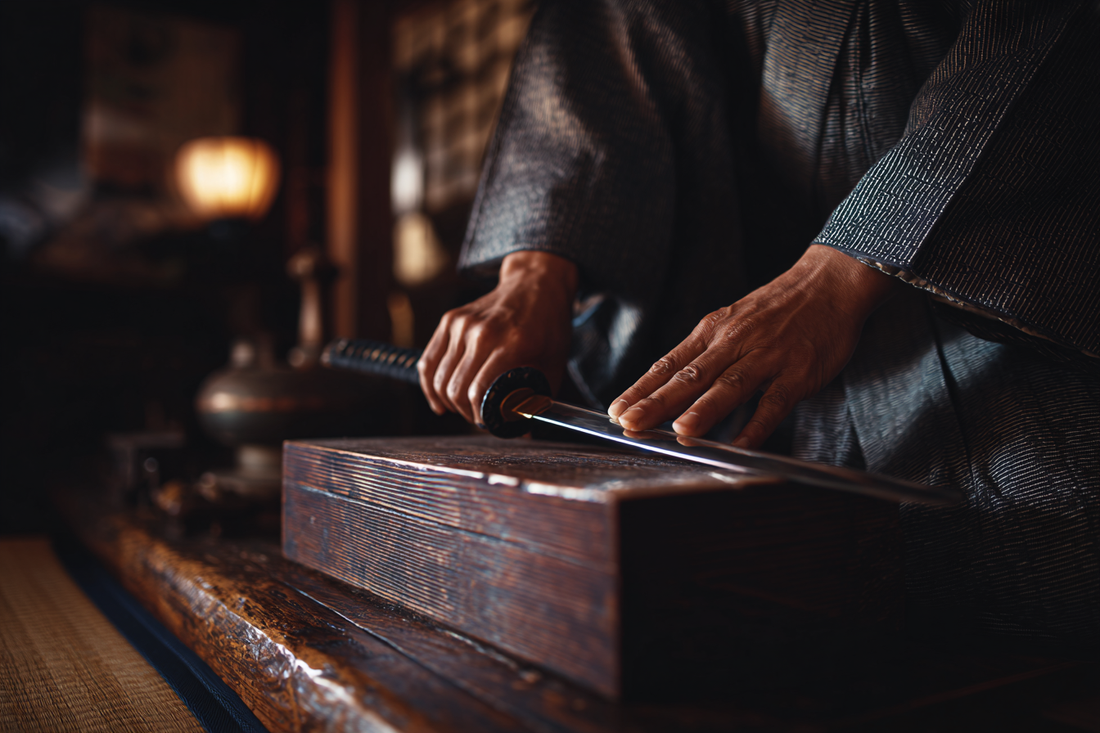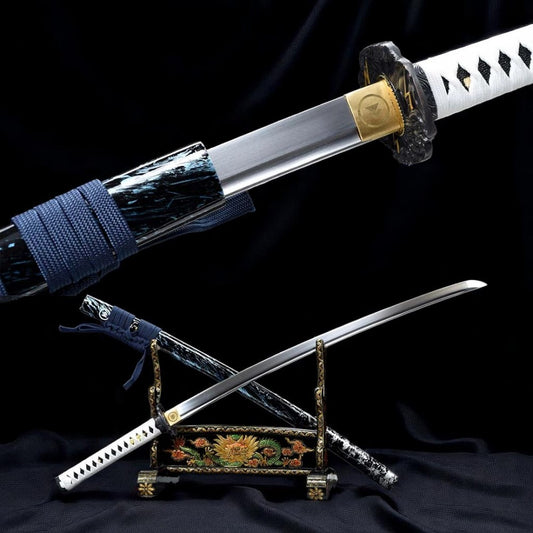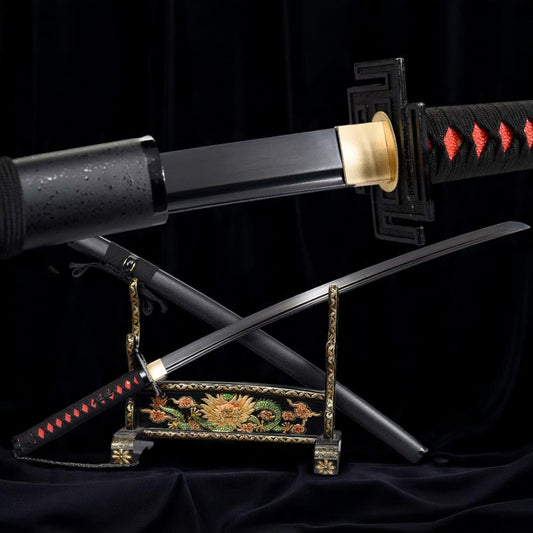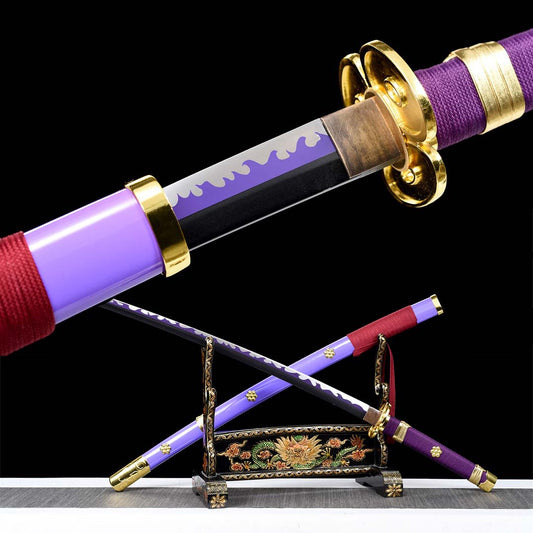
Scabbard vs Sheath: The Art of Protecting a Katana
Share
Whether you're new to the world of swords or a seasoned collector, you’ve likely encountered multiple terms for what seems to be the same item: scabbard, sheath, and saya. But are they truly the same? In the world of the katana, precision matters — and the differences are worth knowing.
What Is a Scabbard?
A scabbard is a hard, protective case designed to cover the blade of a sword or knife. In katana terminology, this is traditionally called the saya, crafted from lightweight wood and often lacquered for durability. Unlike leather sheaths used for Western swords or knives, scabbards for katanas are built to preserve both the blade’s sharpness and spiritual integrity.
Scabbard vs Sheath: What's the Difference?
While many use “scabbard” and “sheath” interchangeably, there’s a subtle distinction:
- Scabbard: Usually hard, rigid, and fitted to a blade, typical for katanas and other long swords.
- Sheath: A more general term, often used for soft cases or leather coverings for knives.
For collectors and martial artists, knowing the difference can mean choosing the right gear, especially when browsing for a katana sword sheath online.
The Role of the Saya in Japanese Sword Culture
The saya isn’t just a holder. It's part of the sword’s identity. A perfectly balanced katana must have a saya that complements its weight and shape. Samurai were trained to draw and re-sheath their swords with precision,any snag could be fatal.
Many traditional sayas are made from honoki wood, chosen for its soft grain, which reduces wear on the blade. Premium sayas may feature rayskin inlays, silk cord wrappings, or custom lacquer artwork, all of which can be found in our Katana Collection.
How to Properly Sheath a Katana
Inserting a katana into its saya isn't just about sliding it in. Here’s how to avoid blade damage:
- Never force the blade the fit should be snug but not tight.
- Wipe the blade before sheathing, especially after practice.
- Insert slowly at an angle, letting the back of the blade guide into the scabbard groove.
This process, known as noto, is an essential part of iaido and kenjutsu training.
Storage Tips: Katana in Sheath or Not?
Many collectors ask: Should I store my katana sheathed? The answer is yes — but with care. Always:
- Ensure the blade is dry and lightly oiled before sheathing.
- Store horizontally with the edge facing up, to preserve sharpness and prevent warping.
- Keep the katana in a cool, dry place, away from sunlight and humidity.
Common Scabbard Styles
Some popular katana scabbards include:
- Black scabbard: Classic and stealthy, ideal for martial practice.
- Decorative scabbards: Featuring dragons, samurai motifs, or anime-inspired symbols.
- Rayskin-wrapped saya: Often paired with Damascus blades for luxury finish.
Explore all models in our full katana collection.

Accessories That Extend Saya Life
To maintain your scabbard and blade together, we recommend using a proper katana cleaning kit. It includes choji oil, rice paper, uchiko powder, and more, all of which help prevent rust and moisture damage when sheathing your sword.
Scabbard vs Sheath Comparison Table
| Aspect | Scabbard | Sheath |
|---|---|---|
| Material | Hard wood or metal | Soft leather or fabric |
| Usage | Long swords like katana | Knives or tools |
| Fit | Custom-fitted | General fit |
Recommended Products
- Complete Katana Cleaning Kit
- Blue Blade Katana – 1060 Carbon Steel
- Kill Bill Katana – Damascus Steel & Real Rayskin
Conclusion: Why the Scabbard Matters
Too often overlooked, the scabbard is as vital as the blade it protects. Whether you call it a scabbard, a sheath, or a saya, understanding its role means you respect the katana not just as a weapon, but as a legacy. And that’s what we believe in at Katana Canada.
FAQ: Katana Scabbards and Storage
What is the difference between a scabbard and a sheath?
A scabbard is usually rigid and fitted for swords, while a sheath can be soft and used for knives or tools. For katanas, the term “saya” is traditional.
Should I store my katana in its scabbard?
Yes, as long as the blade is clean and oiled. Avoid sheathing a wet or dirty blade, as it could cause rust inside the saya.
Can I buy decorative scabbards separately?
Yes. We offer select scabbards as accessories or with custom katana options. Contact us for more info.
What’s the traditional material used for katana scabbards?
Japanese katana scabbards are typically made from honoki (Japanese magnolia) wood, lightweight and gentle on the blade.




